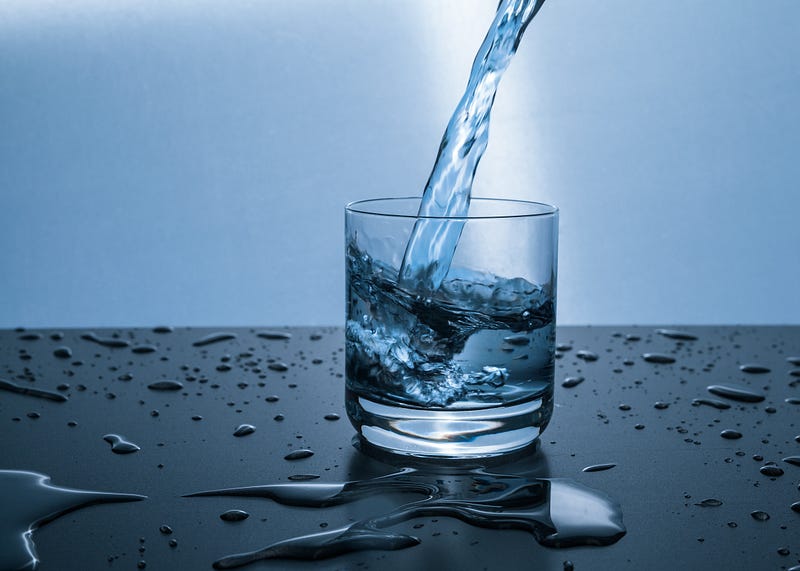Understanding Water Pollution: Causes, Effects, and Prevention
Written on
Chapter 1: The State of Water Pollution
Water pollution remains a critical issue, with historical data revealing that, at the dawn of the 20th century, approximately 2 million tons of wastewater were released into natural water bodies daily. Alarmingly, one liter of contaminated water could pollute up to 8 liters of clean water. Currently, the global management of water resources is deteriorating, largely due to rising populations and advancements in industrial and agricultural sectors. Below, we delve into the primary causes and consequences of water pollution.

Did you know that one-third of the global population lacks access to clean water? Each year, approximately 3.5 million individuals lose their lives due to inadequate drinking water or the consumption of tainted water. Experts predict that by 2050, around 7 billion people across 60 countries may face severe water shortages. These alarming statistics highlight the often-overlooked issue of water pollution. It’s vital to recognize that life on Earth is entirely dependent on this essential resource.
When discussing water pollution, we refer to a scenario where various factors lead to detrimental alterations in the bacteriological, chemical, and physical properties of water. This condition can arise from the introduction of organic, inorganic (in gaseous, liquid, or solid forms), and radioactive substances. Additionally, heat can disrupt the normal physicochemical balance of water, thereby impeding its usability for drinking, living, and domestic purposes.
Section 1.1: Types of Water Pollution
Water pollutants can be classified into numerous categories based on their origin, impact on living organisms, source, and persistence. The primary distinction arises from their source:
- Natural Pollutants: These occur due to natural interactions between water and environmental factors, including the decay of soil and rock materials and decomposing aquatic life. Natural contamination can also result from elements present in surface and groundwater, such as iron compounds and salinity.
- Artificial Pollutants: Stemming from human activities, these pollutants are the result of harmful practices.
Pollutants are further categorized by their sustainability:
- Persistent Pollutants: These substances degrade very slowly and linger in water for extended periods.
- Non-Degradable Contaminants: These consist of materials that do not break down naturally.
- Decomposable Pollutants: While these can negatively impact living organisms, they are subject to degradation processes.
Section 1.2: Sources of Water Pollution
While natural factors can lead to water contamination, it is undeniable that human actions are the primary contributors to water pollution. The most prevalent sources include:
- Municipal Pollution: This refers to wastewater produced by households and public facilities that, without treatment, is unsuitable for reuse. Urban wastewater contains not only human excretions but also industrial and hospital waste.
- Industrial Pollution: Originating from manufacturing processes, this type of pollution consists of hazardous waste that may contain harmful chemicals, including acids, organic compounds, and cyanides. The elevated temperatures of industrial effluents can also severely disrupt aquatic ecosystems.
- Agricultural Pollution: The increasing use of fertilizers and pesticides leads to significant water contamination. These substances can leach into groundwater and surface waters, causing eutrophication—a process of nutrient overload that harms aquatic life. Common agricultural pollutants include nitrates, sulfates, chlorides, and phosphates.
Chapter 2: The Global Water Crisis
Despite nearly 40% of surface waters in the European Union being in good condition, numerous countries struggle with severe water pollution. Nations like Argentina, Bangladesh, the Philippines, Indonesia, China, and India face significant challenges. Even Italy is not exempt, with the Sarno River being one of the most polluted in Europe.

Effects of Water Pollution
The ramifications of water pollution are extensive and vary according to their sources. Municipal pollution often leads to altered taste, color, and clarity of water, alongside the death of aquatic organisms. Agricultural runoff can promote the growth of harmful microorganisms and excessive algal blooms due to nutrient overload.
Preventing Water Pollution
In light of these challenges, proactive measures to prevent water pollution are essential. Governments worldwide are implementing stricter regulations for industries and households, particularly those using underground reservoirs for wastewater disposal. The rise of organic farming practices is also contributing to reduced water pollution, although it is crucial to recognize that complete elimination of pollutants is not yet achievable.
Ultimately, the responsibility for water cleanliness extends beyond governmental regulations; it lies with each individual. Our daily choices have a direct or indirect impact on the quality of water we utilize. Therefore, fostering an environmental consciousness is of utmost importance.
This video discusses the causes and effects of water pollution, providing a deeper understanding of the sustainability challenges we face today.
Designed for younger audiences, this video educates children about water pollution and emphasizes the importance of keeping our water clean.